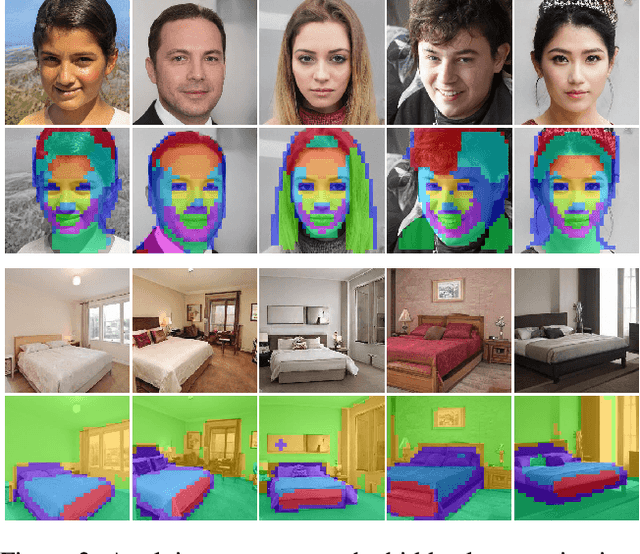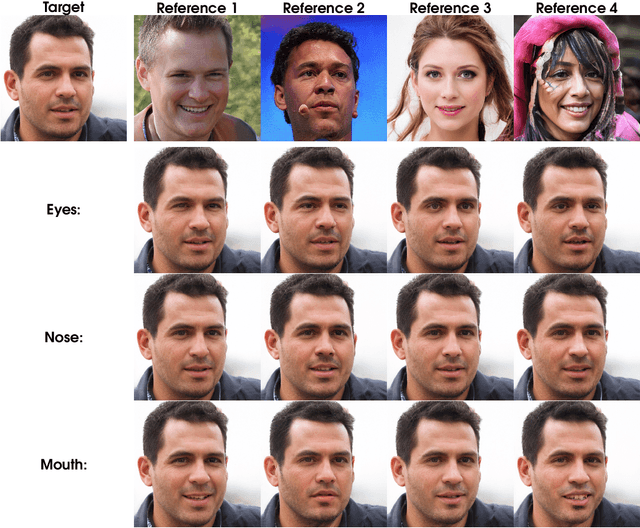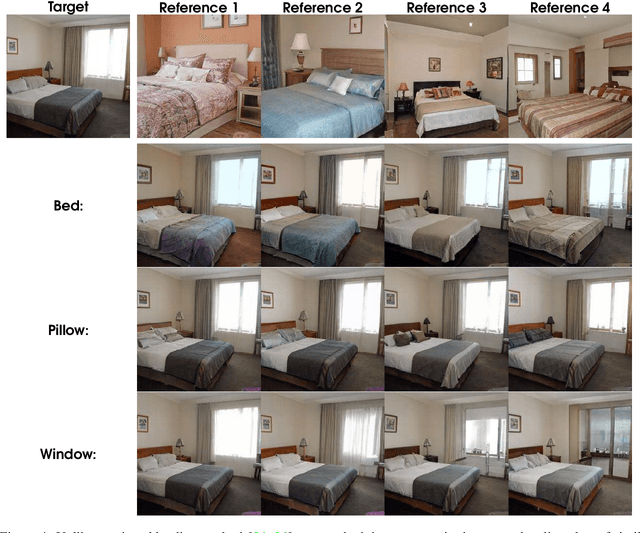Bob Price
Editing in Style: Uncovering the Local Semantics of GANs
May 21, 2020



Abstract:While the quality of GAN image synthesis has improved tremendously in recent years, our ability to control and condition the output is still limited. Focusing on StyleGAN, we introduce a simple and effective method for making local, semantically-aware edits to a target output image. This is accomplished by borrowing elements from a source image, also a GAN output, via a novel manipulation of style vectors. Our method requires neither supervision from an external model, nor involves complex spatial morphing operations. Instead, it relies on the emergent disentanglement of semantic objects that is learned by StyleGAN during its training. Semantic editing is demonstrated on GANs producing human faces, indoor scenes, cats, and cars. We measure the locality and photorealism of the edits produced by our method, and find that it accomplishes both.
Cooperative neural networks (CoNN): Exploiting prior independence structure for improved classification
Jun 01, 2019



Abstract:We propose a new approach, called cooperative neural networks (CoNN), which uses a set of cooperatively trained neural networks to capture latent representations that exploit prior given independence structure. The model is more flexible than traditional graphical models based on exponential family distributions, but incorporates more domain specific prior structure than traditional deep networks or variational autoencoders. The framework is very general and can be used to exploit the independence structure of any graphical model. We illustrate the technique by showing that we can transfer the independence structure of the popular Latent Dirichlet Allocation (LDA) model to a cooperative neural network, CoNN-sLDA. Empirical evaluation of CoNN-sLDA on supervised text classification tasks demonstrates that the theoretical advantages of prior independence structure can be realized in practice -we demonstrate a 23\% reduction in error on the challenging MultiSent data set compared to state-of-the-art.
 Add to Chrome
Add to Chrome Add to Firefox
Add to Firefox Add to Edge
Add to Edge